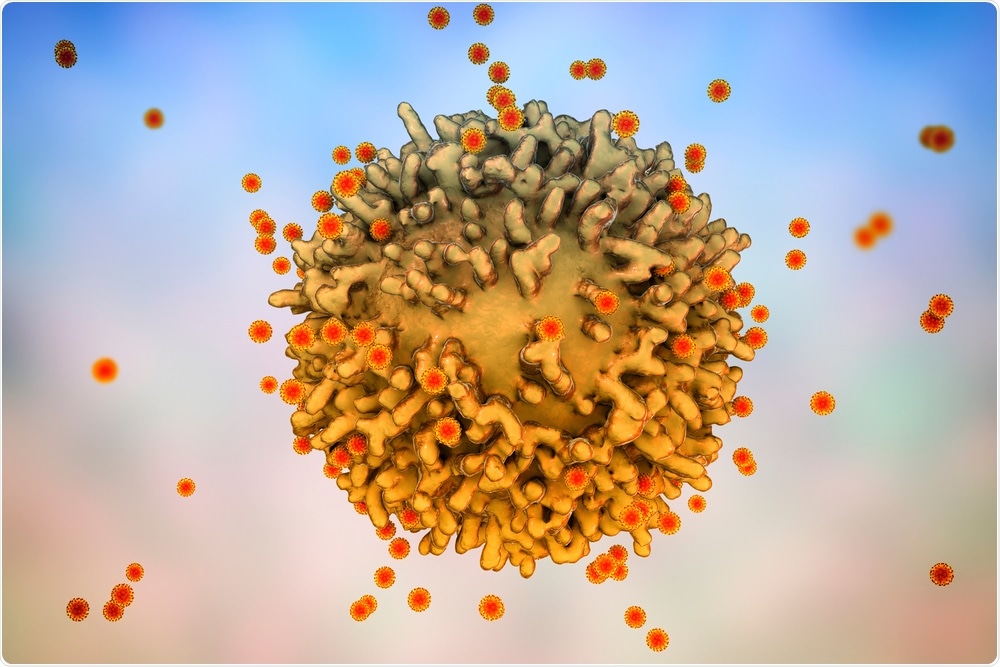As the severe acute respiratory syndrome coronavirus 2 (SARS-CoV-2), which is the virus responsible for the coronavirus disease 2019 (COVID-19), continues to spread throughout the world, scientists are increasingly interested in discovering effective antiviral compounds.
 Study: Neutralizing Aptamers Block S/RBD-ACE2 Interactions and Prevent Host Cell Infection. Image Credit: Kateryna Kon / Shutterstock.com
Study: Neutralizing Aptamers Block S/RBD-ACE2 Interactions and Prevent Host Cell Infection. Image Credit: Kateryna Kon / Shutterstock.com
What did the study show?
In the current study, aptamers of ssDNA that bind to the SARS-CoV-2 spike (S) protein or receptor-binding domain (RBD) were tested for their ability to neutralize the virus and block infection in vitro. Purified S/RBD proteins coated on beads, which were used to mimic SARS-CoV-2, were first screened to identify the aptamers that are capable of binding to and neutralizing this virus.
Out of the over 100,000 sequencing reads, three distinct motifs were found within the central core of the oligonucleotides. The vast majority of sequence motifs fell in one cluster, containing a distinct sequence motif within the central core. A total of three representative aptamer sequences that were obtained from two different clusters were selected for further analysis, which involved labeling the 5’ end of these motifs with Cy3 fluorescent reporters and assessing their binding activity by flow cytometry.
High affinity for spike/RBD binding
Aptamers 1 and 2 showed a high affinity for S/RBD. Although aptamer 6 of Motif 2 had a similar affinity value for S/RBD, it exhibited a significantly lower maximal binding capacity that was only about one-third of the values for aptamers 1 and 2. Aptamers 1 and 2 appeared to compete for binding sites on the virus mimic molecules, whereas aptamer 6 did not. The specificity of aptamers 1 and 2 is believed to be due to the target specificity provided by their common originating sequence motif.
Like any other functional oligonucleotide, the aptamers included in the current study depend on magnesium ions for target binding activity. The binding by aptamers typically occurs within the temperature range of 4–37 °C, and at magnesium ion concentrations of 0.65–1.10 mmol/L. Importantly, the aptamers discussed here did not bind with blood or other culture cells and remained stable at body temperature for the full duration of the experiment (24 hours).
Inhibition of spike/RBD-receptor binding
The neutralizing aptamers act by inhibiting the binding of the S protein to the angiotensin-converting enzyme 2 (ACE2) receptor. Using enzyme-linked immunosorbent assays (ELISA), the scientists found that both aptamers 1 and 2 exerted dose-dependent inhibition of S/RBD-ACE2 binding, but not aptamer 6.
Inhibitory effects were observed over a range of temperatures, from 4 °C, 25 °C, and 37 °C, which indicates that these compounds are useful in vivo. When applied in cell culture, aptamers 1 and 2 prevented S and RBD binding to ACE2 on host cells at low nanomolar (nM) concentrations of about 5 nM.
Neutralization of viral particles
Neutralization assays using a pseudovirus/ACE2-expressing host cell system confirmed the therapeutic potential of these aptamers. Using luciferase-carrying fluorescent labels attached as reporter genes to the viral genome, the researchers were able to visualize and assess the number of cells infected by SARS-CoV-2 by measuring cellular luciferase activity.
When treated with aptamers 1 and 2, viral particles were successfully neutralized and host cell infection was blocked. This same effect is not seen with aptamer 6 or with ssDNA.
A subsequent pilot study using a microneutralization assay confirmed the clinical utility of aptamers 1 and 2, as host cells were found to be protected against the infection when treated with these compounds. Further studies will be needed to understand the specificity and affinity of aptamer binding to the earlier SARS-like viruses; namely, the SARS-CoV and the Middle East Respiratory Syndrome Coronavirus (MERS-CoV), as well as the currently circulating SARS-CoV-2.
Detection of viral particles
The researchers investigated the use of S-binding aptamers to detect SARS-CoV-2. Although these aptamers had a high binding affinity for the S/RBD mimic proteins, they were not successful in preventing the binding of the S/RBD to the ACE2. Therefore, although the S aptamers are successful in targeting the S/RBD sites, they are likely not involved in the S/RBD-receptor interaction.
Importantly, the size of the aptamers does not appear to affect the failure of these aptamers to block S/RBD function. This is supported by the fact that 40-mer core sequences of aptamers 1 and 2 are capable of neutralizing the S/RBD and inhibiting their binding to virus particles.
Combinations and multivalent structures
Aptamer cocktails are also a promising approach, since they may target more than one S/RBD epitope. To optimize such combinations, more aptamers need to be identified with different motif sequences that target the S/RBD specifically with high binding and blocking capabilities.
Multivalent nanostructures composed of aptamers are another possibility, with either covalent or non-covalent methods being feasible. This would allow many different viruses to be bound simultaneously by presenting multiple S/RBD binding sites, thus enhancing the neutralization efficacy of these aptamers.
What are the implications?
Though this is a proof-of-concept study, the data presented here shows the potential for using ssDNA aptamers to inhibit the binding of SARS-CoV-2 S/RBD to the ACE2 receptor to neutralize the virus and prevent cell infection. These aptamers could be added to the array of therapeutic and preventive molecules that are currently being tested to treat SARS-CoV-2 in patients, such as monoclonal antibody therapies.
Preclinical studies are being conducted to confirm the utility of such neutralizing aptamers against the authentic virus in host cells. This will be essential to carry their development forward into clinical use.